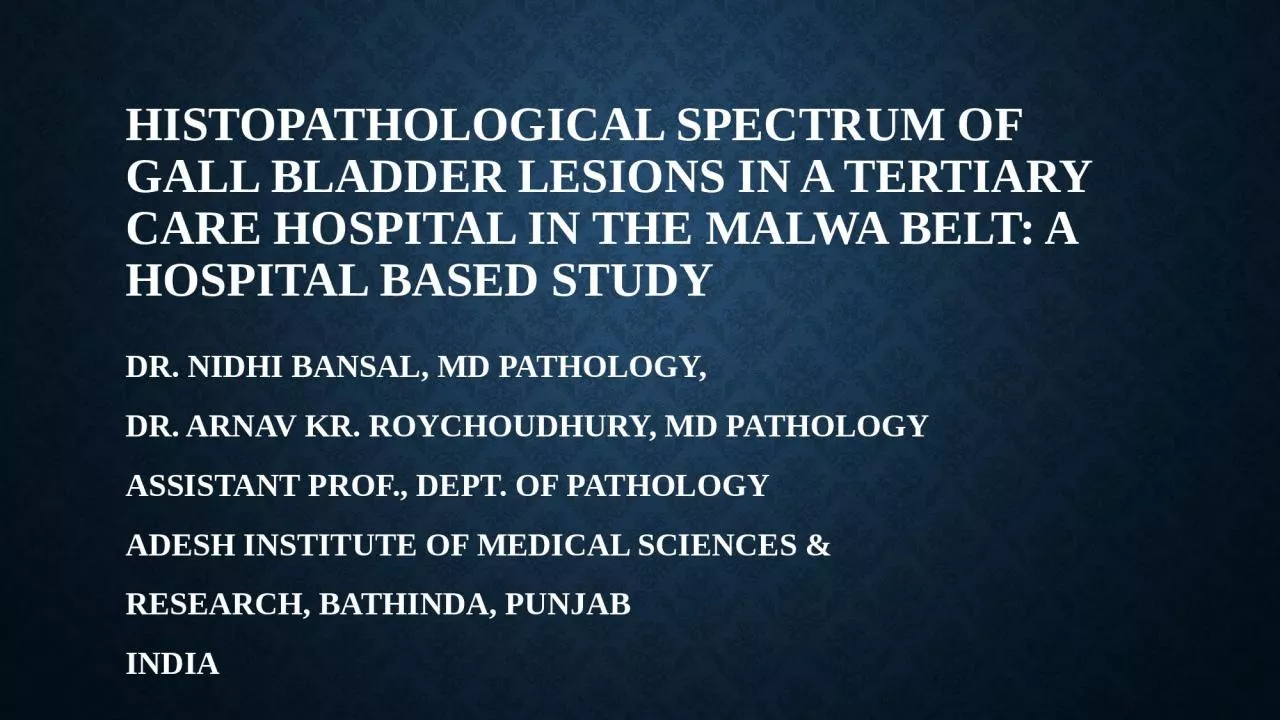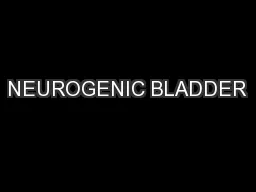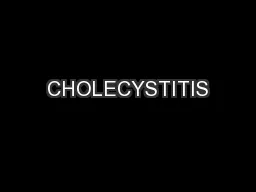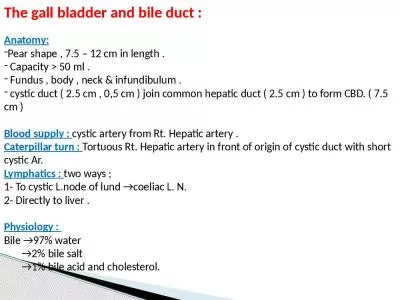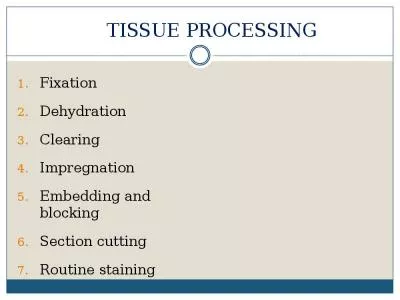PPT-HISTOPATHOLOGICAL SPECTRUM OF GALL BLADDER LESIONS IN A TERTIARY CARE HOSPITAL IN THE
Author : isabella | Published Date : 2022-06-08
DR NIDHI BANSAL MD PATHOLOGY DR ARNAV KR ROYCHOUDHURY MD PATHOLOGY ASSISTANT PROF DEPT OF PATHOLOGY ADESH INSTITUTE OF MEDICAL SCIENCES amp RESEARCH BATHINDA PUNJAB
Presentation Embed Code
Download Presentation
Download Presentation The PPT/PDF document "HISTOPATHOLOGICAL SPECTRUM OF GALL BLADD..." is the property of its rightful owner. Permission is granted to download and print the materials on this website for personal, non-commercial use only, and to display it on your personal computer provided you do not modify the materials and that you retain all copyright notices contained in the materials. By downloading content from our website, you accept the terms of this agreement.
HISTOPATHOLOGICAL SPECTRUM OF GALL BLADDER LESIONS IN A TERTIARY CARE HOSPITAL IN THE: Transcript
Download Rules Of Document
"HISTOPATHOLOGICAL SPECTRUM OF GALL BLADDER LESIONS IN A TERTIARY CARE HOSPITAL IN THE"The content belongs to its owner. You may download and print it for personal use, without modification, and keep all copyright notices. By downloading, you agree to these terms.
Related Documents

